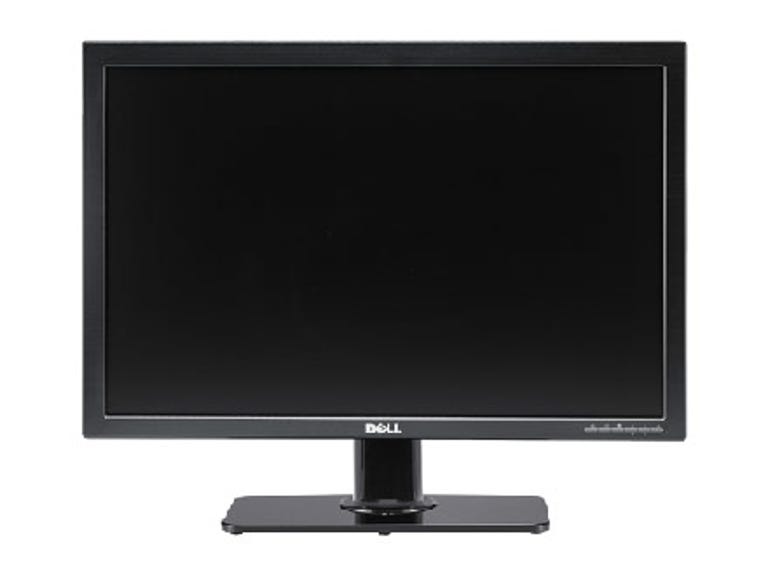 Why You Can Trust CNET
Why You Can Trust CNET Dell 3008WFP review: Dell 3008WFP
With a crazy number of inputs, 1080p over component and good rendering of 1080i, this screen has set itself up as a potential TV replacement, let alone a huge monitor. This one's the new king.
Update: Dell has sent us updated information detailing that the 3008WFP uses an S-IPS panel, not an S-PVA as previously advised
The Good
The Bad
The Bottom Line
The monstrous Dell 30-inch screen has a successor -- the 3008WFP. Listening to complaints from consumers about the lack of video inputs in its predecessor, Dell has responded with a resounding "we hear you" and has gone ludicrously overboard -- and we love it.
Design
Taking on the aesthetics of its smaller 27-inch sibling, this imposing screen has a dark aluminium bezel surrounding the panel, while the screen itself is attached to a piano black and silver stand, all in one piece.
While we prefer the ruggedness of the old 3007WFP's height adjustment, the new mechanism works just fine, as well as offering the required tilt and swivel control. The front section of the neck can be pulled away, cables threaded and then cover replaced for discreet cable management.
Features
The 3008WFP is built on an S-IPS panel and uses a WCCFL backlight, claiming to be able to show 117 percent of the NTSC colour gamut, theoretically allowing for greater distinction between colour tones and providing better colour accuracy. Colour calibration should also be made a little easier thanks to the sRGB and Adobe RGB presets included. The PC/Mac Gamma and RGB/YPbPr input modes make a return from the previous model, however this monitor has a few new tricks up its sleeve.
The first major point is the single biggest change between revisions -- the 3008WFP has ever so slightly trumped its predecessor's single DVI port by including two DVI ports, one HDMI, Composite, S-Video, VGA, and even DisplayPort. DisplayPort is lining itself up to be the successor to VGA/DVI, and Dell expects this to be mainstream by 2009 -- so the screen is future-proofed nicely.
The 3008 is now capable of 1:1, Aspect and Fill scaling modes as a result, offers sharpness control, a dynamic contrast ratio of 3000:1 (which can be turned off, reducing it to 1000:1), user enabled DDC/CI (so your graphics card can adjust your monitor settings) and a Picture By Picture (PBP) mode with a confusing implementation. After a bit of fiddling we figured it out -- first set the source (what appears on the right hand side) using the OSD, from which you can choose DVI-D 1, DVI-D 2, HDMI, Composite or S-Video. Next turn PBP on and cycle through Component, VGA or DisplayPort for the left hand side. Sadly you can't put DVI-1 next to DVI-2 or HDMI -- we can only assume the three digital ports use some of the same equipment so it doesn't lend to sharing the signals.
The introduction of a scaler chip means you no longer need to have a dual-link DVI equipped video card to display on the screen, and lesser devices like laptops and so forth should be able to display up to 1920 x 1200, or in the case of media devices 1080p. 1080i looks fantastic compared to previous Dell monitors, and as an added bonus, our Xbox 360 played 1080p content just fine over the component connection. The PlayStation 3 looked similarly spectacular over HDMI at both 1080i and 1080p.
While it is a non-glossy screen, with a completely black background it reflected enough of our silhouette to be slightly disturbing. On a light background, this was completely unnoticeable. More noticeable is what we can only suppose to be the viewing angles at work -- with the head placed in the middle of the screen and a black background set, the corners seemed as if some white light was bleeding from them -- but shifting our head so we faced these corners caused the issue to disappear. One of the few downsides of having such a massive screen that you need to turn your head to see it all!
If you hook up through HDMI, you can also pass the audio stream through the monitor to your 5.1 sound set-up, or downmix to 2.0/2.1 channel on the fly, assuming that you're using 3.5mm connections for your sound set-up. This functionality won't extend to your consoles if you hook up through Composite or Component though, as no RCA audio connectors are supplied. A power socket is though, which is there purely for the optional Dell soundbar.
For connectivity, four USB ports are featured (two under the monitor, two on the side), and a card reader on the left hand side supports xD/SD/MS/MMC and CF.
Included in the box are DVI, VGA and DisplayPort cables, as well as a cleaning cloth.
Performance
Pushing the screen through DisplayMate, it was capable of discerning all greyscale tones from 0-255. While the gradients weren't the most impressive we've seen and tended to crush to black a little quickly, they were certainly acceptable. Gaming in Crysis was sublime, although running it at the native resolution of 2,560 x 1,600 proved to be a little bit too much for our 8800GTX graphics card. Movies similarly were great, and the pure size of the screen and resolution will mean architects, 3D creators, video editing junkies and desktop publishing kids will love it.
With a crazy number of inputs, 1080p over component and good rendering of 1080i, this screen has set itself up as a potential TV replacement, let alone a huge monitor. This one's the new king.


